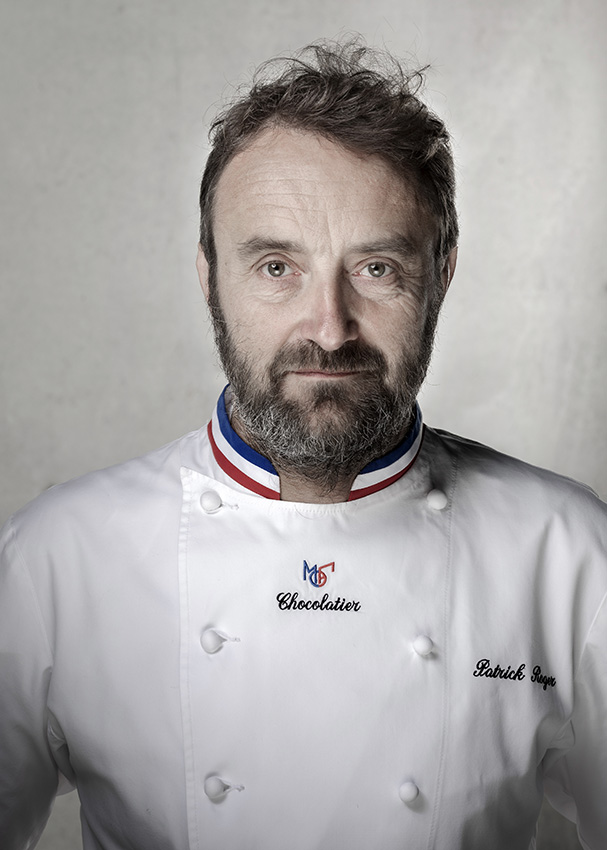The Meilleur Ouvrier de France that he is, at the head of 9 shops in and around Paris, has forgotten nothing of his roots. The son of a baker and grandson of a farmer, he remains very attached to the world of farming. So much so that he owns his own almond fields and, just last year, his own vineyards. Perfect for talking about chocolate and wine…
You don’t make wine any more?
No, we’ve just stopped… In the early 2010s, I bought around forty hectares of almond trees, between Aude and Pyrénées-Orientales, including 2.58 hectares of vines that I wanted to keep. I reasoned the whole thing out and, in 2016, I produced a fantastic first harvest, before putting it straight into amphora. For the occasion, I teamed up with a local winemaker, Aliette Bourg, an archaeologist by training, who manages 9 hectares of organic vineyards in the Agly valley. Unfortunately, Covid came along. Harvesting, bottling… everything turned into a headache. We sold last summer, on the vine, without vinifying.
Global warming can’t have helped either…
In the region, only 40 mm of rain fell this winter. Around Perpignan, the vines are simply dying. That’s how serious the situation is. These disturbances are having an immediate impact on our business, and even more so on that of the farmers. Who is helping them?
What have you learnt from this experience? Would you compare chocolate to wine?
Obviously, yes. For both, it’s a question of terroir. For both, fermentation plays a role. For both, the chocolatier and the winemaker have their own way of thinking and seeing things. As far as I’m concerned, I run my winery in the same way as I run my chocolate factory. Instinctively, without worrying about trends, respecting what nature has to offer at the time and in accordance with my tastes. To do this, all the work I’ve done at Valrhona with Marie Repoux, head of sensory data, has been very useful. It enabled me to put my feelings into words and to confirm the logic of my approach, by highlighting, for example, my aversion to aromas that are too mineral, too flinty, to gamey notes or even to bitterness. These are all guidelines that I have subsequently been able to share, both in the production of my couverture chocolates and my wines.
And what about wine and chocolate pairings?
The power of chocolate takes everything in its path. It’s so full-bodied and long on the palate! « Balancing it is a complex task. Even more so at the end of a meal, when each of us is saturated with fat, sugar, everything… So, for dessert, rich, opulent alcohols can offer some interesting combinations. For example, I remember a chocolate truffle-melanosporum-whisky pairing… It was crazy! A great alternative is to serve the chocolates as a starter. It’s a real game-changer. I confirmed this with Jérôme Banctel, who has just been awarded his 3rd Michelin star for La Réserve in Paris. A flagship chef for me. Alain Senderens’ executive chef at Lucas Carton at the time, he served my Amazon half-sphere with a heart of lime caramel on a kombu seaweed and porcini mushroom broth with a glass of Leclerc Briant champagne at the start of the meal. One of my finest food and wine pairings. It was beyond words. There was just an appetite for eating and drinking. The alcohol sort of diluted the chocolate. Syrah can also have this ability to ‘fluidify’ tasting. The few bottles I’ve produced bear witness to this, with notes that are both fruity and full-bodied, but without heaviness. And with good reason: this wine has been designed like my chocolates.

